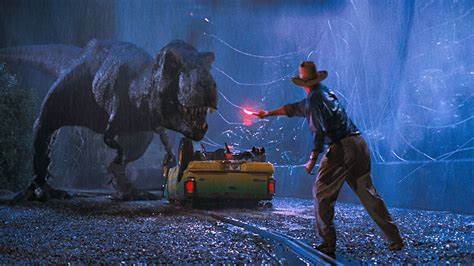Have you ever wondered what it would be like to swing from skyscrapers, leap over buildings, and crawl up walls? Welcome to the world of Spider-Man, where the line between science and fiction blurs with every acrobatic feat. But let’s get real for a moment—without super-strength, most people wouldn’t be strong enough to use Spider-Man’s powers. It’s not just about donning the iconic red and blue suit; it’s about the sheer physical prowess needed to perform such spectacular stunts. Grab your web-shooters, and let’s dive into the science behind Spider-Man’s leaps and bounds.

The concept of super-strength is a staple in the superhero universe, and Spider-Man, aka Peter Parker, is no exception. His strength is not just about lifting heavy objects; it’s about the ability to exert incredible force, especially when it comes to his signature moves. Take, for example, his astonishing vertical leap. According to the Marvel handbook, Spider-Man can jump higher than three stories. But let’s break down the physics behind this superhuman jump.

To leap upward, one must overcome the force of gravity. For a person weighing 200 lbs, any vertical gain must be greater than the 1G base, which equates to 200 lbs of force. It takes a significant amount of G-force to jump. For an average person to achieve a 24-inch vertical leap, they need to exert just over 4 Gs of force. However, Spider-Man’s leg press is a staggering 20,000 lbs, suggesting that his maximum jumping output should be at least double that, enabling him to leap with 40,000 lbs of force, or a massive 239.5 Gs. This would theoretically launch him 114 feet in the air before gravity brings him back down.
What does this mean in practical terms?
For Spider-Man, it’s not just about the height he can reach; it’s about the speed and agility with which he can maneuver mid-air. His super-strength allows him to perform feats that go beyond mere jumping; it’s about aerial acrobatics, rapid changes in direction, and the ability to absorb the shock of landing from great heights. This strength is also crucial for his web-slinging activities. Swinging from building to building requires not only the tensile strength of the webs but also the muscular strength to control the swing and the force of the launch.
Spider-Man’s strength is also evident in his combat abilities. He’s been known to lift more than his supposed maximum of 10 tons, including entire skyscrapers. This discrepancy in his displayed strength versus his documented strength is a testament to the fact that there’s more to his power than meets the eye. It’s not just about raw force; it’s about the application of that force in moments of stress and adrenaline.
But with great power comes great responsibility, and also, great vulnerability. Spider-Man’s strength is not without its weaknesses. His spider-sense, for instance, can be dulled, making him a more manageable foe. His costume, as iconic as it is, offers little protection against heavy gunfire, leading him to develop alternatives like the Spider-Armor for more defensively sound options. And let’s not forget his susceptibility to certain chemicals like ethyl chloride, a common pesticide that can bring him to his knees.
Despite these weaknesses, Spider-Man remains one of the most powerful and relatable superheroes. His powers may have fluctuated over the years, especially with storylines like ‘One More Day’ that rewrote reality and stripped him of certain abilities. Yet, his core set of superpowers—strength, speed, agility, spider-sense, and wall-crawling—coupled with his accumulated abilities over the decades, make him a formidable hero.
The science behind Spider-Man’s strength is as fascinating as it is complex. It’s a blend of biology, physics, and the mystical, with a dash of comic book magic. Whether leaping tall buildings or battling nefarious villains, Spider-Man’s strength is a cornerstone of his character, and understanding the science behind it only adds to the awe of his spectacular feats.
Diving into the realm of Spider-Man’s strength, we find ourselves in a world where the ordinary rules of physics and biology take a backseat to the extraordinary. The very essence of Spider-Man’s abilities transcends the pages of comic books and ignites the imagination of fans worldwide. In this section, we’ll explore the depths of Spider-Man’s strength and how it extends beyond the comics, into a domain where only the most ardent of fans dare to tread.
Spider-Man’s strength is complex and has grown over time.
From lifting cars to stopping trains, his feats of strength are legendary. But what about the lesser-known aspects of his power? For instance, Spider-Man’s ability to speak to spiders may seem trivial, but it’s a fascinating extension of his connection to the arachnid world. Although this power was more prominently displayed by his clone, Kaine, Peter Parker himself once possessed this uncanny ability after a bizarre rebirth from a giant spider. It’s a power that’s both eerie and awe-inspiring, offering a glimpse into the more mystical side of Spider-Man’s powers.
Then there’s the matter of his healing factor. While he may not regenerate as rapidly as Wolverine or Deadpool, Spider-Man’s ability to recover from injuries is nothing short of remarkable. His resilience has seen him bounce back from gunshots and even regenerate an eyeball, a testament to the regenerative powers that lurk within his DNA. This healing factor is a subtle yet crucial component of his strength, allowing him to endure the physical toll of his superhero lifestyle.
Spider-Man’s strength is not without its limits.
His vulnerabilities are as human as they are superhuman. The iconic red and blue suit, while agile and emblematic, offers little protection against heavy artillery. This has led to the creation of alternatives like the Spider-Armor, a testament to Peter Parker’s ingenuity but also a reminder of his mortality. His spider-sense, a formidable tool in his arsenal, can be dulled, rendering him more vulnerable to surprise attacks. And let’s not forget his susceptibility to ethyl chloride, a common pesticide that can debilitate him, proving that even superheroes can be brought down by the most mundane of substances.
Despite these weaknesses, Spider-Man’s strength is a force to be reckoned with. His ability to lift more than the 10 tons as stated in the Marvel handbook has been demonstrated on numerous occasions. He’s hoisted skyscrapers and performed other feats of strength that defy explanation, suggesting that there’s more to his power than can be quantified in mere numbers. It’s a strength that’s both physical and psychological, born of stress, adrenaline, and the sheer will to protect those he loves.
Spider-Man’s tenure as an Avenger further illustrates his strength.
Not only has he served as a reservist, but he’s also been a full-time member and even financed the group for a time. His strength is not just in his muscles; it’s in his heart and his unwavering commitment to the cause of justice. He’s battled foes like Carnage, an even more violent and unpredictable offshoot of the Venom symbiote, showcasing his ability to confront and overcome threats that are as mentally taxing as they are physically demanding.
The mystical aspect of Spider-Man’s powers, as suggested by Ezekiel Simms, adds another layer to his strength. The idea that his abilities are not just the result of a science experiment gone awry but are also tied to a mystical spider totem, positions Spider-Man as a central figure in a larger, more enigmatic universe. His battles with totem-hunter Morlun are a testament to the depth and complexity of his powers, blending the scientific with the supernatural.
Spider-Man’s strength is a rich tapestry woven from the threads of science, mysticism, and sheer human determination. It’s a power that resonates with fans because it represents the potential for greatness within us all. Whether he’s swinging through the concrete canyons of New York City or facing down interdimensional threats, Spider-Man stands as a symbol of strength in all its forms. His powers may have fluctuated, his vulnerabilities may have been exposed, but the spirit of Spider-Man remains unbroken, a beacon of hope and resilience in a world that often seems as fantastical as the pages of a comic book.
Related posts:
A few questions about Spiderman’s physical strength
10 Superpowers Spider-Man Keeps Hidden (And 10 Weaknesses Only Super Fans Know)
World – Spidey’s actual strength level?





